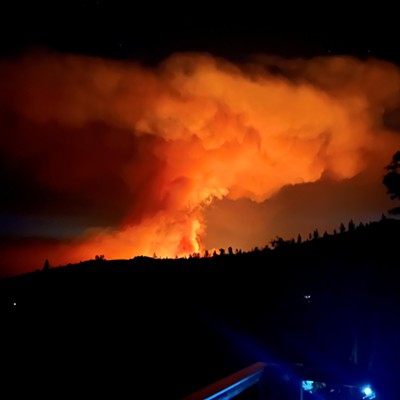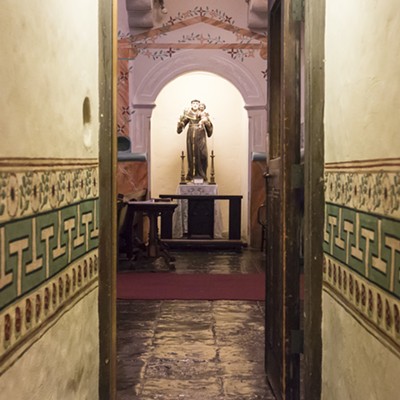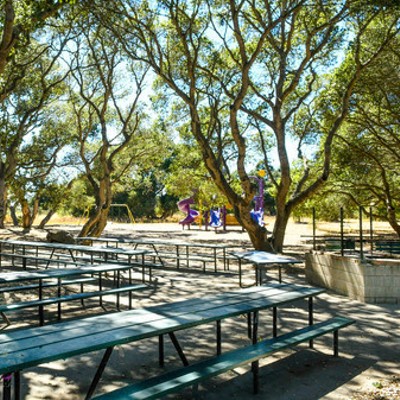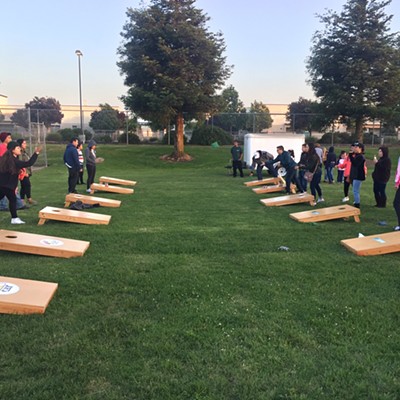Senior Skip Day is an event not officially sanctioned by local schools, but it's a day anticipated by many high school seniors. Many from Lompoc High School went off to a beach on this day, June 4, 1963. While some students basked together on the beach, Bobby Domingos and Linda Edwards instead went to a different beach by themselves. It was the last time they were seen alive.
Days after they went missing, the bodies of Domingos and Edwards were found hidden in a ramshackle shed near a remote stretch of Gaviota Beach. Years later, local law enforcement suspected that the couple was among the first victims of the Zodiac Killer, a serial killer who gained notoriety for tormenting the Bay Area with his crimes in the late ’60s and early ’70s, and has never been caught.
The Domingos and Edwards murders are just two of the 26 cold cases in Santa Barbara County, some of which are believed to have been committed by infamous serial killers.
The Sun researched three of the most notorious unsolved cases for this story. All of the murders have either occurred here or their victims were somehow connected to Santa Barbara County. Their deaths are tragic and mysterious. They’ve entered the annals of American crime lore, and have been the subject of Hollywood movies, countless books and articles, and the obsessions of numerous sleuths who’ve attempted to solve the crimes. However, the victims, and their families, still await justice.
Golden State Killer
Before he became known as the Golden State Killer, he was called the East Area Rapist and is tied to the rapes of at least 45 women in the east Sacramento area during the late 1970s, according to the FBI. He was also dubbed the Original Night Stalker (not to be confused with now-deceased Night Stalker serial killer Richard Ramirez), because his crimes typically occurred early in the morning. Police have linked the rapes and the Golden State Killer’s subsequent murders through DNA evidence and details of the crimes.
Police also believe he was responsible for a slew of burglaries in neighborhoods where the rapes occurred. Then on Feb. 2, 1978, he began killing. A year later, the crimes moved south to Santa Barbara County.
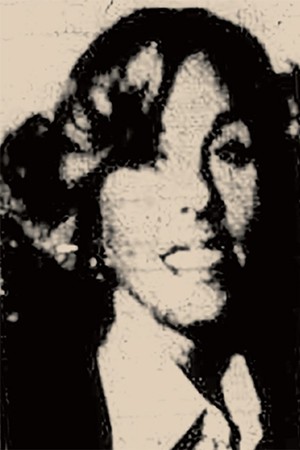
On Oct. 1, 1979, a couple from Goleta survived an attack from a man believed to be the Golden State Killer, according to a report in the Santa Maria Times. More than two months later, in late December, the Santa Maria Times reported that 35-year-old Santa Maria psychologist Alexandria Manning and 44-year-old Dr. Robert Offerman were found murdered, shot multiple times, in a residence located on Avenida Pequena in Goleta.
Manning’s co-workers at a child abuse hotline were shocked to learn of her death.
“She was a totally non-violent person, so alive,” a source told the Santa Maria Times in a January 1980 article. “She gave so much to her patients.”
More victims followed. A couple was found murdered at their home in Ventura. Their wrists were bound with drapery cord using a diamond knot, and the suspect also became known as The Diamond Knot Killer.
A year and a half later, in July 1981, 35-year-old Cheri Domingo, a corporate secretary, and 28-year-old Gregory Sanchez, an electronic engineering technician, were found shot and bludgeoned to death in a home located on Toltec Way in Goleta, according to an article published at the time in the Santa Maria Times.
It’s believed that the Golden State Killer would sometimes call his victims’ homes pretending he had called a wrong number. He became so brazen with his reputation that the Golden State Killer taunted the public in a poem he sent to Sacramento-area news outlets.
The most recent killing linked to the Golden State Killer occurred in 1986, and he has remained elusive ever since. Authorities believe he could still be alive.
Thirty years later, the FBI, in conjunction with police from Contra Costa and Sacramento counties, announced in June a national campaign to identify the killer. Police are offering a $50,000 reward to anyone with information leading to the revelation of the identity of the Golden State Killer. They also plan to erect electronic billboards nationwide with information on the crimes in order to encourage the public to come forward with information.
In an online video, retired Sacramento County Sheriff’s Department detective Ray Biondi said he regrets not being able to solve the crimes.
“It is mind-boggling that he committed so many crimes without a slip-up,” Biondi said, adding that he still believes the killer can be brought to justice.
If the Golden State Killer is still alive, police believe he is somewhere in the range of 60 to 75 years old. At the time, he was described as a white male with blond hair and in good physical condition, articulate, well dressed, and clean-cut. Marcus Knutson, a FBI special agent, believes the killer may have a collection of crime scene tokens stashed away somewhere.
“We know that our guy took items,” Knutson said on the FBI website. “So if for some reason [someone]—whether their family member is deceased or they’re cleaning out a storage unit—come[s] across a weird collection of items such as women’s IDs, rings, earrings—anything that’s out of the ordinary—it could be significant.”
Anyone with information is urged to call 1-800-CALL-FBI (1-800-225-5324) or submit tips online at tips.fbi.gov.
The Black Dahlia murder
One of the most notorious, and perhaps gruesome, murders connected to Santa Barbara County is that of Elizabeth Short, whose nude body was found in Leimert Park, Los Angeles, in 1947. Her body was cut in half, drained of all its blood, and given a “Glasgow smile,” with her cheeks sliced open from ear-to-ear at the corners of her mouth.
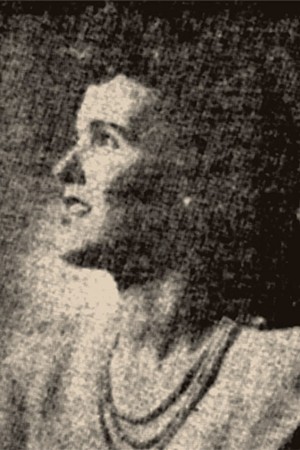
In the early 1940s, before her grisly murder in Los Angeles, Short spent a considerable amount of time in Santa Barbara County.
In 1943, she was arrested in Santa Barbara for underage drinking and sent home to Massachusetts on a train.
Eventually she made it back to California. Much of her whereabouts from this time until her death are shrouded in mystery.
Jim Zemaitis of Santa Maria-based Overland Security said his father, Bruno Zemaitis, a security guard and amateur sleuth, briefly investigated Short’s death.
Fingerprint records discovered by detectives showed that she had applied for work at the commissary at Camp Cooke, which is now Vandenberg Air Force Base, according to Zemaitis. He remembers learning about the mystery after looking through his father’s scrapbook and seeing newspaper clippings on Short’s death.
Zemaitis told the Sun that he recalls his father telling him that Short was a frequent customer of the long-gone Snappy Lunch Diner, which was located on the corner of Broadway and Cook streets in Santa Maria. Zemaitis’ mother waited on her occasionally at the diner.
Short would dress in all black and wear a black flower in her hair. She had alabaster skin and light blue eyes that contrasted with her black hair.
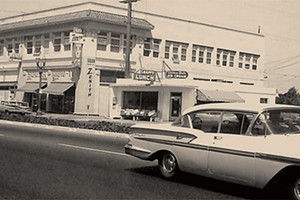
Zemaitis recalled his father saying she was so strikingly beautiful that everyone would drop what they were doing to catch a look at her.
Given the circumstances of her death, Short’s murder became sensational, and she was given the name Black Dahlia. State and federal authorities interviewed hundreds of people, but no evidence has ever conclusively linked any suspects.
Zemaitis remembers his father’s frustration about the FBI’s inaction after contacting the agency regarding Short’s time in Santa Barbara County. She was a vagabond and lived in Vallejo, San Francisco, and Miami. She went from house to house, staying on friends’ couches. Any number of people could be a suspect, Zemaitis said.
“Dad did research and called the FBI, but they never called back,” Zemaitis told the Sun. “He wasn’t passionate about the case, but it upset him that they didn’t get back to him.”
Years into the investigation the case remained unsolved. With an eerie noir atmosphere, Short’s murder became a popular subject of books and films, and it even inspired the name of a heavy metal band. A 2006 film about the murder—appropriately titled The Black Dahlia—starring Josh Hartnett and Scarlett Johansson was nominated for an Academy Award.
The death of Short remains one of Los Angeles’ oldest unsolved murders.
Did the Zodiac Killer strike in Santa Barbara County?
During the tumultuous and freewheeling years of the late 1960s and early 1970s in the San Francisco Bay Area, a killer emerged. Three couples were attacked in remote locations, either shot or stabbed, and in all but one case, only the female victims died.
The killer referred to himself as the Zodiac in hand-written letters sent to several Bay Area newspapers at the time. In them, he’d take credit for murders and taunt police. The letters usually included ciphers that he claimed contained clues to his identity.
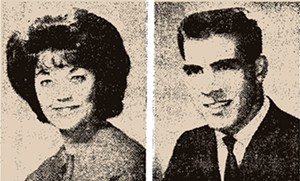
But before he became known as the Zodiac Killer, he may have honed his proficiency with the 1963 killings of Domingos and Edwards in Santa Barbara County.
There is some doubt about this, since the Zodiac never took credit for the murders. However, in 1972, the now-Santa Barbara County Sheriff’s Office issued a press release stating that the killings were the work of the infamous serial killer.
“Although the anticipated response to this statement would be one of skepticism, let me say that we do not make this assertion frivolously,” the press release stated. “We have found that there appears to be a high degree of probability that this subject is responsible for the double murder in our county.”
The police never said how they came to this conclusion. However, details revealed on zodiackiller.com indicate a connection, concluding that the Domingos-Edwards tragedy “has the Zodiac’s fingerprints all over it.”
Similar to some of the attacks on the couples in Vallejo and Napa, the killer forced one of his victims to bind the hands of the other with pre-cut lengths of narrow rope. Also, the victims were shot and killed with a .22 caliber semi-automatic gun. The ammunition, Winchester Western Super X copper-coated bullets, matched the bullets used in the other Zodiac murders.
While the Domingos-Edwards murders continue to drive speculation, the case remains unsolved. Though more than a half-century-old, the mystery of the Zodiac lingers, and police believe he could still be at large.
A 2007 movie, Zodiac, directed by David Fincher and starring Jake Gyllenhaal and Robert Downey Jr., points to a man by the name of Arthur Leigh Allen, but no conclusive evidence backs up this theory. Allen died in 1992.
Zodiackiller.com, however, points to another man—Richard Gaikowski, a former Bay Area newspaper reporter—who died in 2004.
The deaths of Domingos and Edwards are more than just a grim footnote in California’s history. They were young adults who had dreams and aspirations. They had families and friends. They are still loved.
Domingos was your all-American high school student. He played football, lived on a family ranch on Drum Canyon Road, and was handsome, mechanically inclined, and a man anyone would like to have as his or her friend.
According to 73-year-old Lee Gnesa, a childhood friend, Domingos was dating Edwards at the time and they were most likely going to get married right out of high school. Domingos was 18 and Edwards was 17. The two were sweethearts.
Gnesa was a part of the party that found the bodies of Domingos and Edwards.
“They were the nicest young people you could ever meet in your life,” Gnesa said. “Bobby was always thoughtful.”
Domingos still has family living in Lompoc who hold his memory dear.
Domingos’ cousin, who didn’t want to be identified for this story, is now in his 70s and lives in Lompoc. He told the Sun that just before his death, Domingos landed a job driving a fuel delivery truck for Atlantic Richfield oil company.
Domingos was three years older than him.His cousin said he looked up to Domingos. Domingos taught him how to shoot a .22 rifle. Once, he recalls how Domingos had a brush with death when he accidentally shot himself in the lip with a .22 bullet, the same kind of gun that would end his life just a few years later. Domingos’ death deeply affected his cousin.
“I was messed up,” he said, as tears formed in his eyes. “It screwed me up. It was always in the back of my mind. Not so much anymore. When something comes up, I always want to help.”
When asked if he thinks the Zodiac is responsible, he said he doesn’t believe it. He thinks Domingos may have known his killer. He added that bruises were on Domingos’ fist, indicating that he may have fought his attacker, although police weren’t able to confirm this.
The deaths of Domingos and Edwards devastated the entire community. Domingos’ cousin recalls massive funerals for the couple.
“Everybody loved him,” he said. “It was just the kind of guy he was.”
Staff Writer David Minsky can be reached at [email protected].



